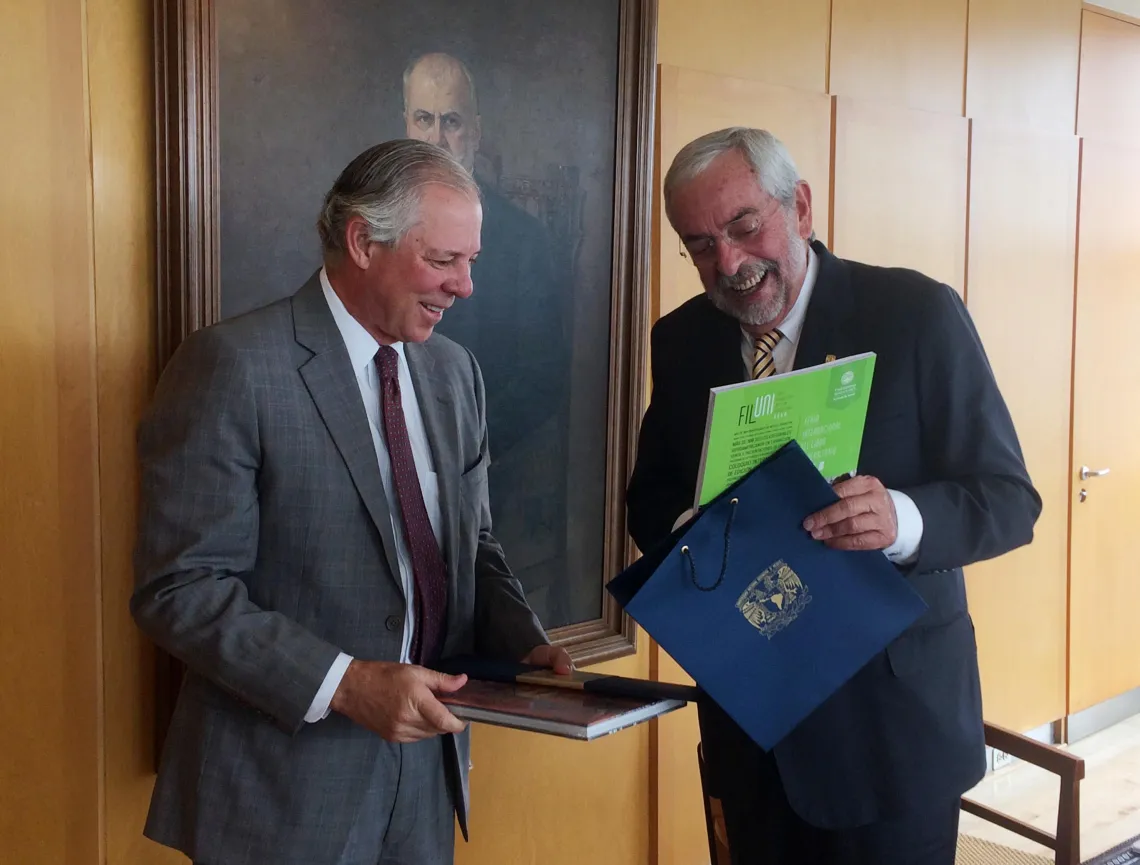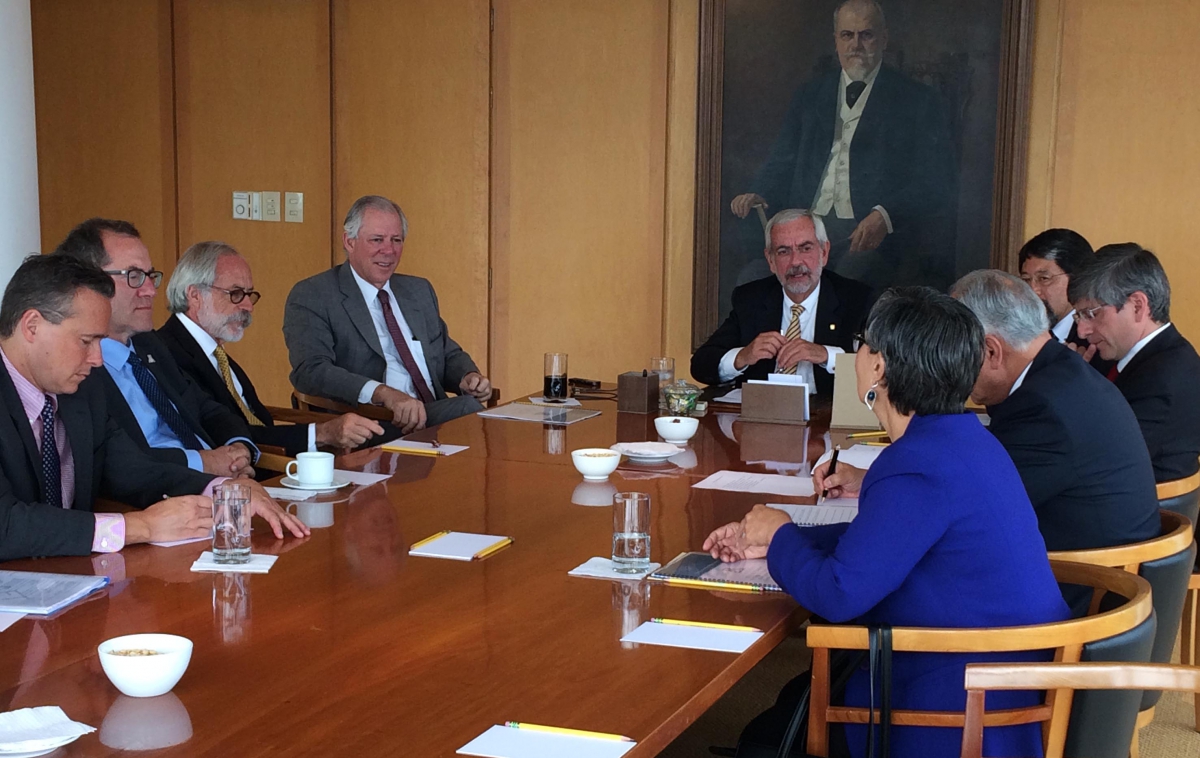Building Bridges in Mexico

 For his first international trip as president of the University of Arizona, Robert C. Robbins chose to visit Mexico, a country with which the UA shares a long history of partnership, collaboration and service.
For his first international trip as president of the University of Arizona, Robert C. Robbins chose to visit Mexico, a country with which the UA shares a long history of partnership, collaboration and service.
Robbins made the trip in late July, less than two months after beginning his appointment as the UA's 22nd president. Over the span of three days, the president crisscrossed Mexico City for meetings with several high-level federal officials, the U.S. ambassador to Mexico, and his counterpart at one of the oldest universities in Latin America, the National Autonomous University of Mexico, known as UNAM.
Accompanying him on the trip were Jon Dudas, secretary of the university; Kimberly Andrews Espy, senior vice president for research; John Paul Jones III, dean of the College of Social and Behavioral Sciences; Marc Miller, dean of the James E. Rogers College of Law; Joaquin Ruiz, vice president for innovation and dean of the College of Science; and José Lever, assistant vice president in the Office of Global Initiatives.
The trip provided Robbins with a comprehensive overview of current and past projects involving the UA and Mexico, in areas including agriculture, public health, energy, water and science.
"Strategically, our first priority in the world in Mexico," Robbins told members of Mexico's National Council of Science and Technology, known as CONACYT.
During meetings at the Ministry of Foreign Affairs, the Ministry of Health, the Ministry of Energy, and the Ministry of the Environment and Natural Resources, Robbins and the other UA leaders discussed efforts already underway that might hold potential for improving the health, prosperity and well-being of the people of Mexico, especially those who live in rural areas with limited access to electricity and clean water.
Those projects include:
- The Smart Villages Initiative, which seeks to provide access to electricity in support of the idea that affordable, reliable and sustainable energy will give way to a wider range of development goals – specifically, better education and health care, as well as clean water and proper sanitation.
- Agrovoltaics, a novel approach to agriculture in which plants are grown beneath solar panels. The plants benefit from the shade, which reduces their water needs. At the same time, the solar panels run more efficiently because the plants release water into the air during photosynthesis.
- A prototype "lunar greenhouse" that relies on hydroponics to grow crops that one day could be farmed on the moon and Mars.
- The Juntos por la Salud (Together for Health) Primary Prevention Mobile Unit, which provides free health promotion and prevention services in communities where a large number of people are uninsured or underinsured.
- Transforming waste sulfur into a lightweight plastic that could be used for lighter, more efficient batteries.
The potential to work with Mexico on developing a telemedicine system was one of the ideas Robbins presented while at the Ministry of Health, where he met with Dr. José Narro, Mexico's secretary of health. The UA's telemedicine program is a national model for the delivery of health care via video conferencing.
Narro expressed his gratitude to the UA for its interest in exploring future collaborations. The UA, he said, knows the value of research, culture and education – and has been close to Mexico.
"We Mexicans want to be close to this university as well," Narro told Robbins.
During their meeting with UNAM officials, including Rector Enrique Graue, Robbins and the UA team discussed the long history of partnership between the two institutions and the potential for future projects that could leverage the expertise of UA and UNAM researchers around topics such as drylands agriculture.
Following the meeting, Robbins was treated to a tour of the Mexico City Olympic Stadium, built for the 1968 Summer Olympics, and a portion of the UNAM campus, a UNESCO World Heritage site that occupies nearly 3 square miles.
Robbins also visited the home of the U.S. ambassador to Mexico, Roberta Jacobson, who held a reception in his honor. Among the guests were UA alumni, representatives from Mexico's governmental, academic and private sectors, and Carlos Sada, undersecretary for North America in the Ministry of Foreign Affairs.
Jacobson noted the UA's long record of collaboration with Mexico, particularly in research endeavors and educational exchange.
Robbins pledged his commitment to ensuring that the UA continues to be a partner with Mexico.
"We're here to build bridges."

